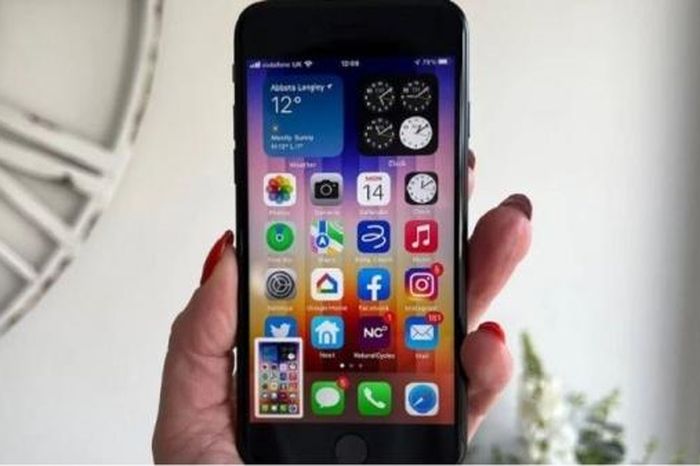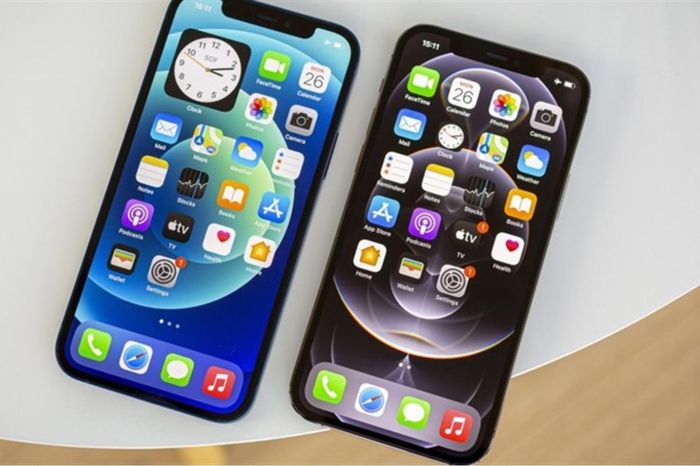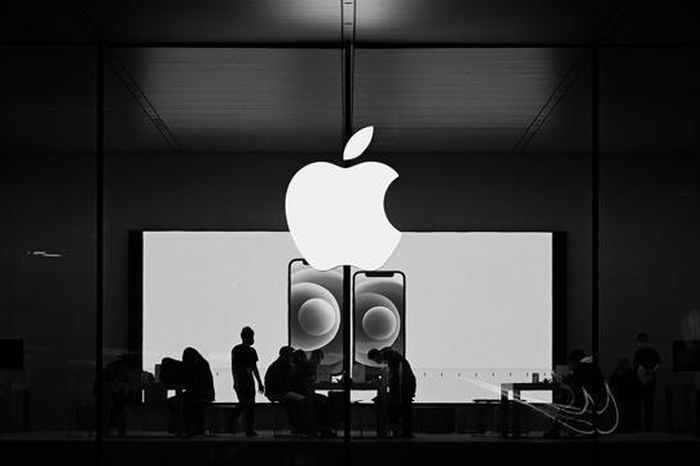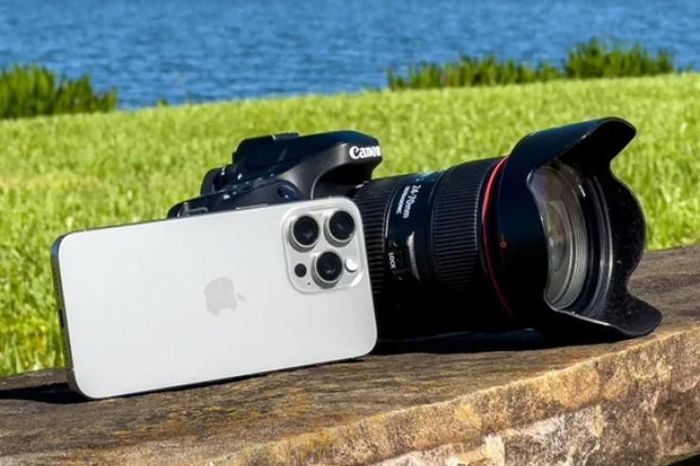New generation iPhone batteries wear out faster?
Over the years, the question of battery health on iPhone has always been a top concern for users. Although Apple has continuously improved both hardware and software, the problem of battery degradation is still an unavoidable obsession with any mobile device using lithium-ion batteries.
According to observations of many technology experts and iPhone users, battery health on new iPhone models has tended to decline faster than previous generations. This is especially noticeable with the iPhone 14 Pro Max and iPhone 15 series, making many people wonder about the cause and solution.
Battery degradation is a natural law
First, it is important to understand that lithium-ion batteries on all mobile devices degrade over time due to their chemical nature. This is a natural and unavoidable process, as batteries rely on electrochemical reactions involving the movement of lithium ions between the anode and cathode. Over time, the materials inside the battery corrode and deteriorate, leading to a gradual decrease in battery capacity and lifespan.
Although many Android users believe that their devices do not have the problem of rapidly draining battery life, the reality is that they experience the same problem as iOS devices. The difference is that Android doesn't display battery health details the way Apple does. Not only Apple, electric car companies like Tesla will never provide accurate information about battery degradation to users, because that can cause unnecessary concerns.
Charge cycle factor
Apple measures battery health by comparing the current battery capacity to the original battery capacity, expressed as a percentage. Normally, the battery will gradually decrease to 99% after a period of use, then slow down and maintain at 97-96% for a long period of time before continuing to decline to 80%.
An important factor affecting iPhone battery health is the number of charge cycles. Each charging cycle is equivalent to fully charging the battery from 0% to 100%, regardless of how many times the charging process occurs in succession. For example, if you charge from 50% to 100% in the morning and from 50% to 100% in the evening, it adds up to 1 complete charging cycle.
Apple recommends that the battery on the iPhone 15 Pro Max and similar models should be able to reach approximately 80% health after 1,000 charge cycles under optimal conditions. However, many users have reported that the battery health on their new iPhones has dropped below Apple's 1,000 cycle figure quite quickly.
Differences in each device
In fact, the level of battery health deterioration is different for each specific device, even if they belong to the same product line and are used in a similar way. This can be explained by differences in the battery manufacturing process as well as the fact that Apple does not regularly and accurately test and update battery capacity.
Additionally, many people believe that the software on iOS 16 and iOS 17 is not yet fully optimized, leading to unnecessary battery drain for new features such as stolen device protection, widgets, and more. Other features work silently in the background. This may contribute to battery health degradation faster than before.
Manage and optimize battery health
Even so, Apple has provided users with some tools to better manage and optimize battery health. In your iPhone's 'Battery' settings, you can set the maximum charge limit to 80%, enable optimal charging, or let the system manage it automatically.
Regarding charging, experts recommend that you use a genuine charger from Apple and put the phone in stand mode when charging overnight. This will help dissipate heat better, limit battery overheating and extend battery life in the long term.
When should I replace the battery with a new one?
Finally, Apple recommends that users replace the battery with a new one when battery health reaches below 80%. At this threshold, the Settings app on iPhone will display the message 'Battery needs to be replaced' to remind you. The 80% level is also considered a safe threshold that allows the phone to operate stably and avoid causing serious performance and hardware problems.
Meanwhile, some others choose to continue using their iPhone until the battery health drops below 80%. They hope that Apple will continue to upgrade software and optimize features to improve battery performance on new iOS versions. However, when battery health is too low, frequent charging and discharging of the battery can increase the risk of battery failure and affect the lifespan of the device.
Replace genuine Energizer iPhone battery
This is a good quality product, not only Energizer batteries but all of the company's products meet standards to ensure high safety. Explosion-proof standards according to European standards (CE, FCC, RoHS,.). You can feel secure when using genuine Energizer batteries.
Energizer batteries can charge quickly with performance equal to the company's own batteries, while ensuring they meet battery standards like original iPhone batteries.
Warranty 12 months 1 for 1 exchange if the error is caused by the manufacturer. Global fire safety insurance for users.
You should read it
- Compare iPhone 13 Pro and iPhone 12 Pro
- How has the iPhone evolved, from 2007 to 2017?
- Should I upgrade my iPhone X to iPhone 13?
- Should iPhone 7, 7+ update iOS 14?
- The difference between iPhone 6S and iPhone 6S Plus?
- 6 steps not to be missed when choosing to buy an old iPhone
- Latest images of iPhone X, iPhone X Plus next generation, iPhone 6.1 inch, 4GB RAM and 2 batteries
- 7 reasons why you should buy iPhone X instead of iPhone 8
May be interested
- 11 new features of Android Wear 2.0 version of Android smart watch
 the android wear 2.0 version of google's recent android smartwatch has been released and has added new features. the following article will review 11 new features as well as tips and tricks to familiarize and use the most effective android wear os 2.0 on android wear smart watch.
the android wear 2.0 version of google's recent android smartwatch has been released and has added new features. the following article will review 11 new features as well as tips and tricks to familiarize and use the most effective android wear os 2.0 on android wear smart watch. - iPhone 8 Plus fast battery bottle nearly 50% compared to the old iPhone?
 wireless charging is one of the most striking features of the new iphone series 8, 8 plus, and x, but this could also be the reason why the new generation of iphone iphones is faster than the old iphone.
wireless charging is one of the most striking features of the new iphone series 8, 8 plus, and x, but this could also be the reason why the new generation of iphone iphones is faster than the old iphone. - Information about Wear OS 5
 despite only launching wear os 4 in mid-2023, google is now preparing to roll out the next major update to its wearable platform next week. this may be the first time wear os has received a major update in a year.
despite only launching wear os 4 in mid-2023, google is now preparing to roll out the next major update to its wearable platform next week. this may be the first time wear os has received a major update in a year. - Google will directly update automatically for Android Wear
 because of its booming development, android has so far (and perhaps forever) still suffered from high fragmentation. withdraw lessons from your mobile operating system, google will correct errors on android wear.
because of its booming development, android has so far (and perhaps forever) still suffered from high fragmentation. withdraw lessons from your mobile operating system, google will correct errors on android wear. - Discover the second generation MacBook Air
 the second-generation macbook air still retains the same sophisticated design as before, and some of the differences on this model are the connector jack, which is faster than the old version and nvidia graphics card.
the second-generation macbook air still retains the same sophisticated design as before, and some of the differences on this model are the connector jack, which is faster than the old version and nvidia graphics card. - These are only available on iPhone X, if it is worth $ 999
 you may have placed an order but still wondered why i had to spend $ 999 to buy the iphone x, while the iphone 8 was less than $ 300 and it wasn't that bad.
you may have placed an order but still wondered why i had to spend $ 999 to buy the iphone x, while the iphone 8 was less than $ 300 and it wasn't that bad. - Invite to admire the iPhone 2X build with a unique slider screen design
 this build gives users a whole new perspective on the new generation iphone in the future.
this build gives users a whole new perspective on the new generation iphone in the future. - Own application page for Android Wear on CH Play
 thus, apart from lg, samsung and motorola, both sony and asus recently participated in the race of smart wristbands using the android wear platform.
thus, apart from lg, samsung and motorola, both sony and asus recently participated in the race of smart wristbands using the android wear platform. - 5 Wear OS smartwatch features to learn from Apple Watch
 wear os smartwatches have come a long way, but there are a few key areas where the apple watch still has the lead. hopefully google will take note of some of these points in future wear os updates.
wear os smartwatches have come a long way, but there are a few key areas where the apple watch still has the lead. hopefully google will take note of some of these points in future wear os updates. - Google introduces notifications on Android Wear
 in a recently published google+ post, google senior developer timothy jordan posted images of how upcoming announcements on the android wear platform will be displayed.
in a recently published google+ post, google senior developer timothy jordan posted images of how upcoming announcements on the android wear platform will be displayed.










 Revealing the simplest and most accurate way to test iPhone screen
Revealing the simplest and most accurate way to test iPhone screen How to cancel app trial on iPhone
How to cancel app trial on iPhone How to solve exercises using AI on App Gauth is extremely good
How to solve exercises using AI on App Gauth is extremely good 5 free music download apps for Android and iOS
5 free music download apps for Android and iOS Apple still bets on China despite the unstable supply chain context
Apple still bets on China despite the unstable supply chain context Love taking photos, should iPhone 12 users buy a new camera or upgrade to iPhone 15?
Love taking photos, should iPhone 12 users buy a new camera or upgrade to iPhone 15?